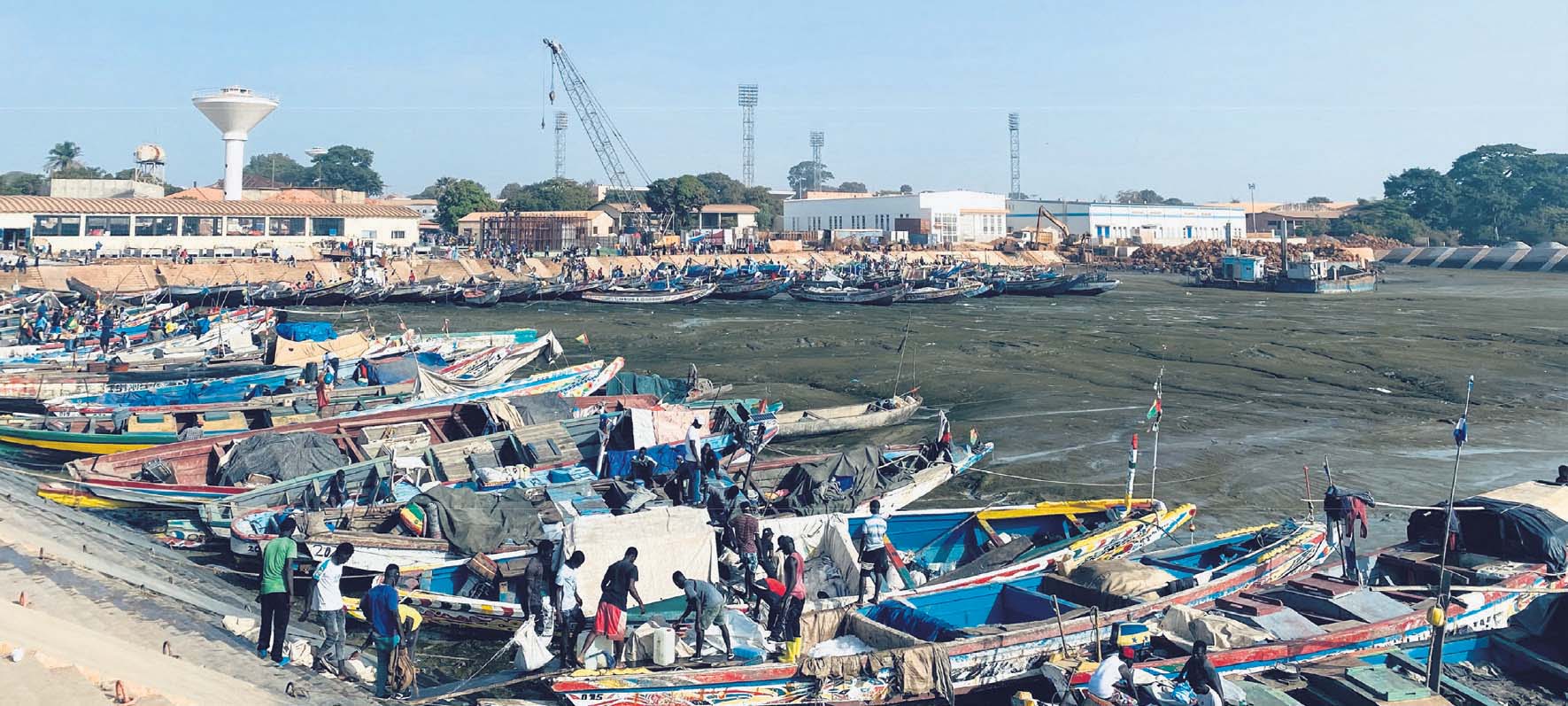Moving Beyond a Single Story of Chinese Distant-Water Fishing (DWF) in West Africa
When responding to a question– “Do you think the Chinese presence in the Gambian fisheries industry is positive or negative?” – local informants provided varying answers.1 Whilst a local vessel captain praised that “the Chinese […] are giving us many opportunities to make money,” a longtime fish dealer rebutted him categorically by stating that “small market workers become out of business.”
What this short vignette indicates is the heterogeneity in local actors’ perceptions and experiences of the Chinese Distant-Water Fishing (DWF) in West Africa, a region to which China dispatched its very first DWF fleet in 1985. This heterogeneity is, however, often overshadowed by the dominant tendency within existing analyses to reduce maritime interactions between China and West Africa into “a single story.”2 This single story condenses China into a homogenous entity and situates all of its engagements with Africa within a timeless and placeless spatial realm, depriving the African coastal actors of agency.
The fishing sector accounts for two percent of West Africa's GDP, with numbers going up to 13.5 percent in the case of Senegal.3 In the past decade the region has witnessed a rapid expansion of Chinese activity: 89 Chinese vessels (out of 153 total foreign vessels) are authorized to fish in Guinea Bissau alone.4
Granting Chinese and other foreign players access to fishing grounds was never a simple economic proposition. It takes on geopolitical significance and embodies the different constellations of African political and economic interests. One question that deserves discussion is whether the growing competition for fisheries’ resources equipped the coastal African countries with greater bargaining power and independent decision-making to forge agreements with foreign actors? Here, any understanding of agency needs to be further unpacked to examine whether these agreement negotiations served only elite power interests or whether they were instrumentalized to introduce developmental transformations in the fishing sector. This is a particularly relevant question to pose as China’s effort to access fishing resources often included the provision of other coastal or fishing-related infrastructures, such as the construction of the Alto do Bandim fishing port in Bissau.

Fig. 1: Porto do Alto Bandim, the main fishing port in Bissau currently under renovation with the support of Chinese foreign aid (Photo by the author, 2022).
At the other end of the spectrum of African agents are the local fishery actors, including fishermen, fisherwomen, traders, vendors, and agents operating in ports and on-shore markets. These people are among the first to face the direct consequences of the resource crunch due to the growth of foreign industrial fishing. While it would be simplistic to assume that the relationship between artisanal and industrial fishers is naturally conflictual with binary representation of industrial fishers as “evil” and small-scale fishers as “pristine,” such characterizations continue to dominate current narratives of the Chinese DWF in West Africa.5 Unfortunately, this position prevents us from developing an empirically-grounded understanding of the manner in which local fishery actors interact, negotiate, and cope with the Chinese fleets.
Instead of ascribing the “victim” identity to local fishers, this article argues that it is worthwhile to explore the human and social dimensions of conflicts and collaboration between Chinese industrial fleets and small-scale fishers in coastal West African countries.6 Particular attention should be given to the agency of the latter as they learn to live with the former, both at sea and on land. The production of catch by Chinese fleets depends upon the participation of local business partners and laborers on boats (often themselves with fishing experience); yet little is known about who these workers are and what their motivations and experiences are of working on Chinese fleets.7 Adverse weather conditions and the need for daily supplies also force the Chinese fleets to dock sometimes at local harbors. We again know surprisingly little about the socioeconomic interactions between local fishing communities and Chinese crew members on the shore. Do the latter seek to secure a minimum level of social acceptance from coastal hosts? Has their presence created any economic and material benefits for coastal communities, and if so, how are they structured and distributed? The degree of reception and patterns of interaction are unlikely to be solely dictated by the Chinese side of the equation. They also depend upon local conditions, including, at the very least, power, gender, and socioeconomic dynamics in West Africa. 8
Hang (Ayo) Zhou, Postdoctoral Researcher, Chr. Michelsen Institute, Norway. Email: hang.zhou@cmi.no